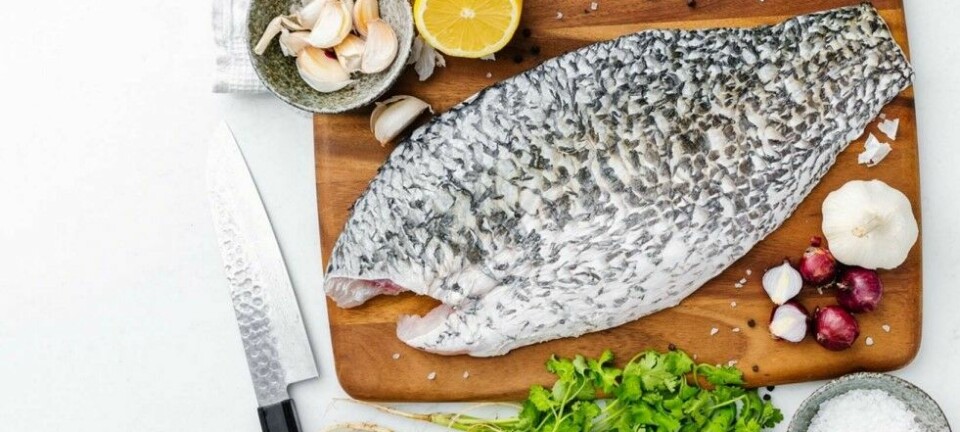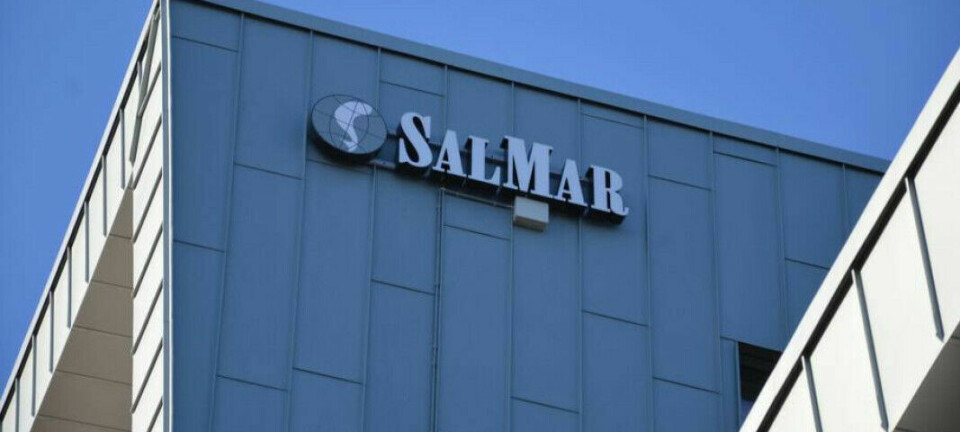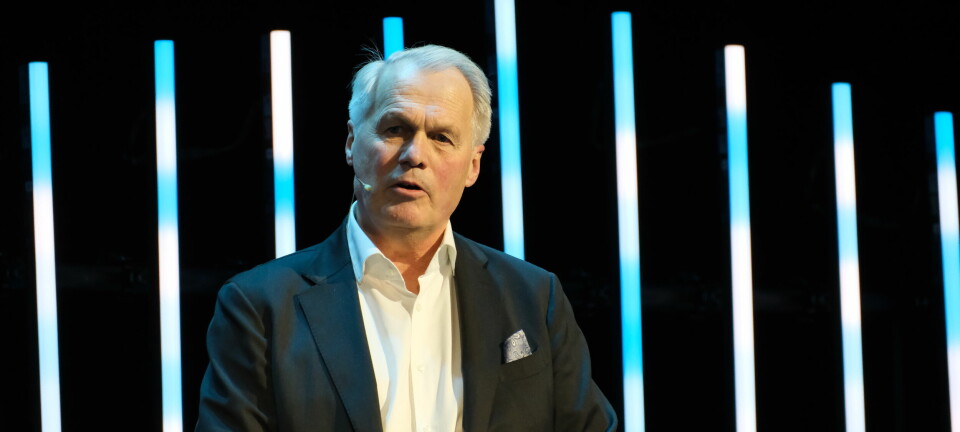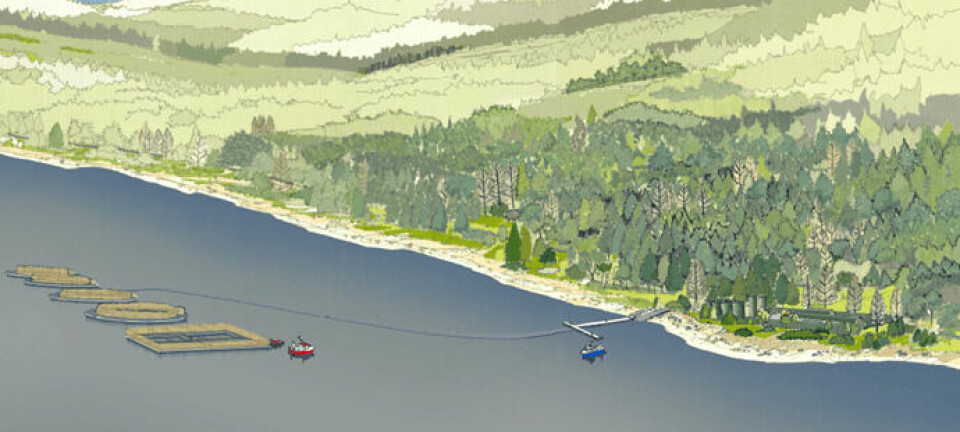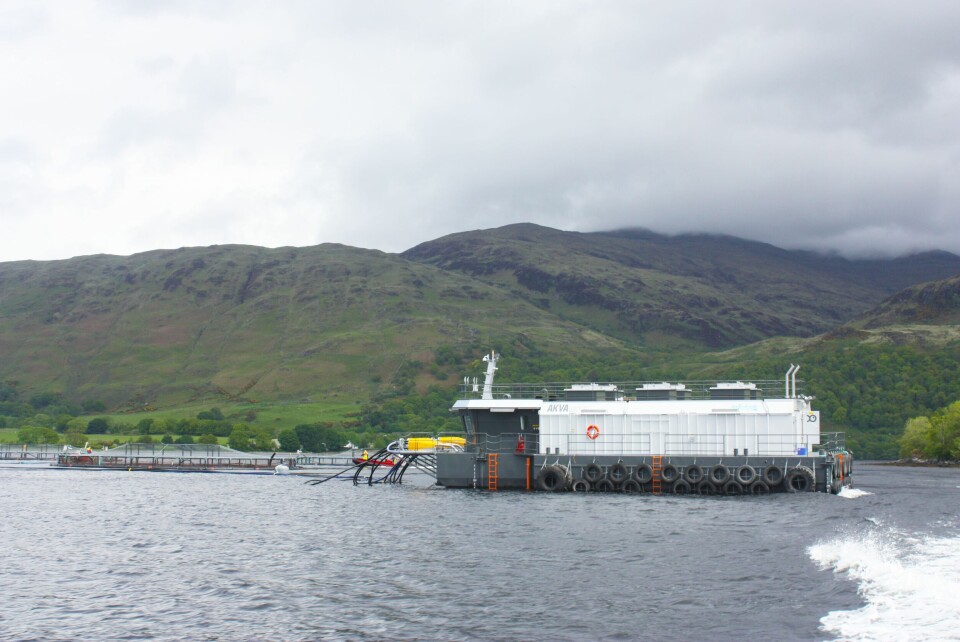
Dawn of a new era
The UK’s largest trout producer is adopting state-of-the-art farming methods in a bid to revolutionise its production model, much to the delight of those operating the farm.
Monitoring a bank of screens from the comfort of a leather upholstered chair aboard a brand new feed barge while a squall rips down the sea loch outside, Martin Collins has few complaints about the upturn in fortunes he’s experienced in the last few months.
While his new role is familiar to anyone who has worked on a state-of-the-art salmon farm, the fish in Martin’s care are rainbow trout – an industry that has, in general, been suffering from stagnation and chronic underinvestment in Britain over the last decade or two – and he now finds himself in the privileged position of manning the only automated marine trout site in UK waters.
Although the site at Sailean Ruadh, on Loch Etive, may have only been operational for less than a month, Martin clearly feels at ease with his new high tech surroundings and, given the eight back breaking years he’s put into raising trout on Loch Etive, it’s easy to see why he is content in his unfamiliarly weatherproof place of work.
Indeed, few could begrudge him the opportunity to occasionally put his bootless feet up or put on the kettle on as he presses buttons and monitors screens after being raised on a diet of 9-hour shifts of hand feeding thousands of trout twice a day.
“It’s night and day,” Martin reflects, “it used to be a long day – 7am-6pm with no breaks, nothing. We also used to get weathered off but we can get to the barge in almost any conditions, so we can feed pretty much 365 days a year now – and at regular times – which makes a big difference to the fish.”
“This is the 7th feed barge installation that I’ve supervised,” Sean Lydon, Dawnfresh’s Business Support Manager, reflects, “and I’m very pleased with the changeover and how the guys have adapted.”
The change in Martin’s life, one that will hopefully spare him getting on first name terms with every physio and osteopath in Argyll in later life, is thanks to a substantial investment by the company’s owner Alastair Salvesen. Fuelled by a passion for making the farming arm of Dawnfresh into a successful part of his impressive business portfolio, Salvesen is in the
process of bringing the company’s trout production methods into the 21st century – a goal he’s determined to pursue until his retirement, which he hopes won’t occur until well into his 90s, according to Sean.
Investment
Indeed, Martin’s new surroundings are courtesy of a £2.5 million capital investment programme in their most recently established site, which is now the benchmark model for the other four run by Dawnfresh in Loch Etive, which are still hand fed in much the same manner as they were 20 years ago. Indeed a quick tour of the other sites with Sean reveals feeding techniques akin to those I was familiar with, while undertaking a short stint of work experience in the mid-90s, just down the coast at another wellknown company. Workboats are loaded with either 25kg bags, which are then hand-poured into blowers, or one-tonne bags which are lifted by Hiabs, until the fish have had their fill.
Sailean Ruadh, however, has been revolutionised by the introduction of a shiny new 240-tonne capacity Akva feed barge, which arrived in mid-May and, Sean hopes, will be the first of three barges to be installed on the loch, allowing Dawnfresh to replace the remaining five old sites with three more on a similar scale to Sailean Ruadh – raising their total production from Etive in the process from its current level of 2,500-3,000 tonnes per year, to 5000 tonnes per year within three years. Given that the company was only producing around 700 tonnes of trout from Etive per year when Sean started in 2011, it’s been a remarkable turnaround, helped in part by the company’s canny expansion into new markets, which was made possible by their decision to grow most of their trout to over 5 kilos apiece – 10 times bigger than most table trout destined for the UK market.
Creating demand
Growing the trout to a larger size proved to be quite a challenge – and an expensive business – for the company, not least, Sean reflects, “because the FCR rose from 1:1 for fish of up to a kilo to about 1:1.35 for fish of 5kg and upwards”. It was not plain sailing for the sales team either, who had no real concept of how to shift the larger fish.
“When we started growing the larger fish, the sales department had no idea where to sell them,” Sean explains, “but the turnaround came when they selected 12 of the finest 6-8 kg fish to take to the European Seafood Expo in Brussels, driving them to Belgium overnight in time for the opening of the event. Few people had ever seen trout of that size, but it created plenty of attention and the Americans recognised their potential straight away, as did buyers from Singapore and Japan.
Currently 60% of the company’s Loch Etive trout goes to the UK retail market, while the next biggest customers are in the US, which takes all fish of 5+ kg HOG – largely for fine dining, sushi bars, and white tablecloth restaurants. “Scots have been amazed to find Loch Etive trout on the menu in restaurants in LA and Disney World,” Sean recalls. The Americans are particularly taken by Dawnfresh’s RR Spink brand, which is currently celebrating its 300th anniversary, and it can’t do any harm that Spink’s products are also entitled to the “By Royal Appointment” emblem, as the company is one of the Queen’s favoured fishmongers.
Indeed, Sean recalls being sent out himself to gut and slaughter 30 trout for special delivery to HRH, while the fish have also featured in state banquets and in British embassies abroad – exactly the sort of stories that impress visiting chefs from high end restaurants, who are equally affected by Loch Etive’s dramatic topography, framed as it is by brooding, precipitous hills.
Given the demand, and their ability to process their own products Dawnfresh harvest trout from Etive 52 weeks of the year – a process currently still done on the water, Sean explains, but which should be made quicker and more efficient with the arrival of the company’s new workboat, which is currently in the process of being sourced.
Lice-free production
Due to the number of burns and rivers that flow into Loch Etive, aided by the impressive rainfall in the surrounding area, the salinity levels of the loch are unusually low, bringing with it one major advantage – the lack of parasites such as lice and the absence, to date, of AGDrelated gill problems.
Sean explains: “Loch Etive is unique amongst Scotland’s sea lochs – during the winter you can see majestic red deer happily drinking from it as the salinity is so low, especially on the surface. As a result, we have very little trouble with lice. “Indeed, there’s a 44-year history of trout farming on Etive and only five lice treatments have ever been needed in that time – an advantage of operating in a brackish water, although we do have some lice present in dry periods, when the salinity levels rise”.
Not that Sean is taking anything for granted, as his 32 years in the industry, previously with Marine Harvest, have taught him and he admits it’s not all roses. “We do, however, have our own problems – there’s been less investment in broodstock in the trout industry compared to the salmon industry – so the fish tend to be less uniform than salmon and can suffer from afflictions and variability. “This is exacerbated by the fact they hatch over a much greater time-lapse – over a period of up to 10 days, compared to salmon which tend to hatch within one of two days”.
Another challenge in Etive is that the Connel Bridge, which spans the seaward end of the loch, is too low to allow the new generation of wellboats into the loch, meaning that the fingerlings, which are stocked at 300g, have to be transported from the company’s hatchery in Northern Ireland by lorry.
Onwards and upwards
It is fascinating to see the company at this juncture and it will be interesting to see whether they are able to meet their goals to change to running three state-of-theart, automated sites that can be fed by barges, as opposed to their current labourintensive system – a system that, Sean says, makes it easy for bigger companies to poach their more promising employees – a number of whom have been lured away by the comparatively easy working conditions seemingly offered by the big salmon producers.
However, given the company’s unique position as the UK’s only producer of large trout, given the favourable farming conditions offered by Loch Etive and given the fact that they have the enthusiastic backing of a passionately motivated owner, it seems that the odds are in their favour.
Dawnfresh - facts and figures
• Dawnfresh currently produces 2,500-3000 tonnes of trout from its five sites on Loch Etive each year.
• The company’s freshwater sites in Loch Earn and Loch Awe produce 2500 tonnes of table trout at 450g apiece.
• There are 59 people involved in the farming operations and most of the senior staff are former Marine Harvest employees.
• The group company has 585 employees – around 20 in Grantown-on-Spey, 120 in Arbroath Smokehouse and the rest in the VAP plant in Uddingston.
• The company processes 12,000 tonnes of salmon, value added and distributed into 3 large UK retailers.
• Trout farming currently accounts for about 20-25% of the Dawnfresh business. To see a full list of the Dawnfresh brands follow link: http://www.dawnfresh.co.uk/our-brands/loch-etive
• The overall business portfolio of Dawnfresh’s owner, Alastair Salvesen – which includes Aggreko and Christian Salvesen – is valued at £1 billion, according to this year’s Sunday Times rich list, which puts him amongst the 10 wealthiest individuals in Scotland.





